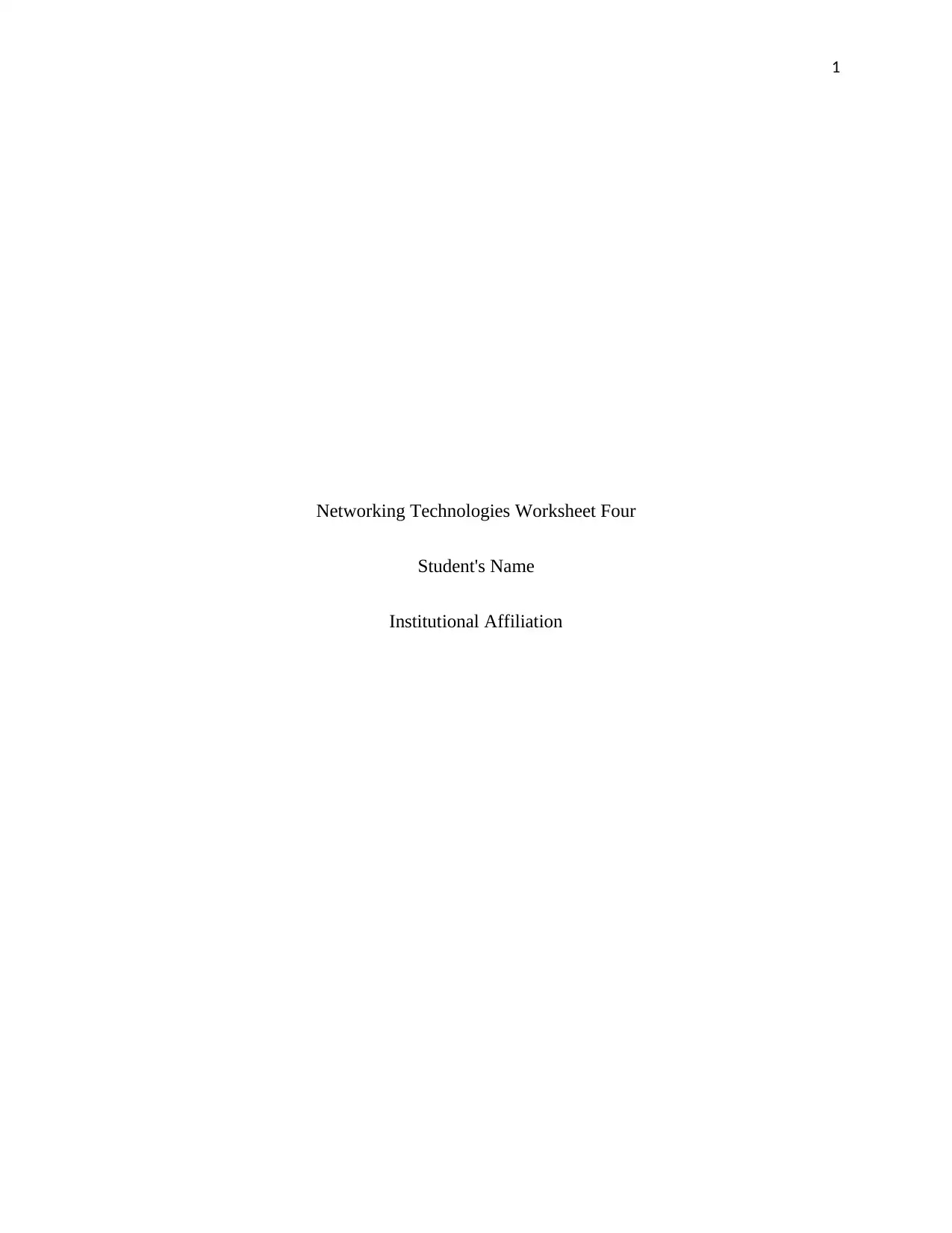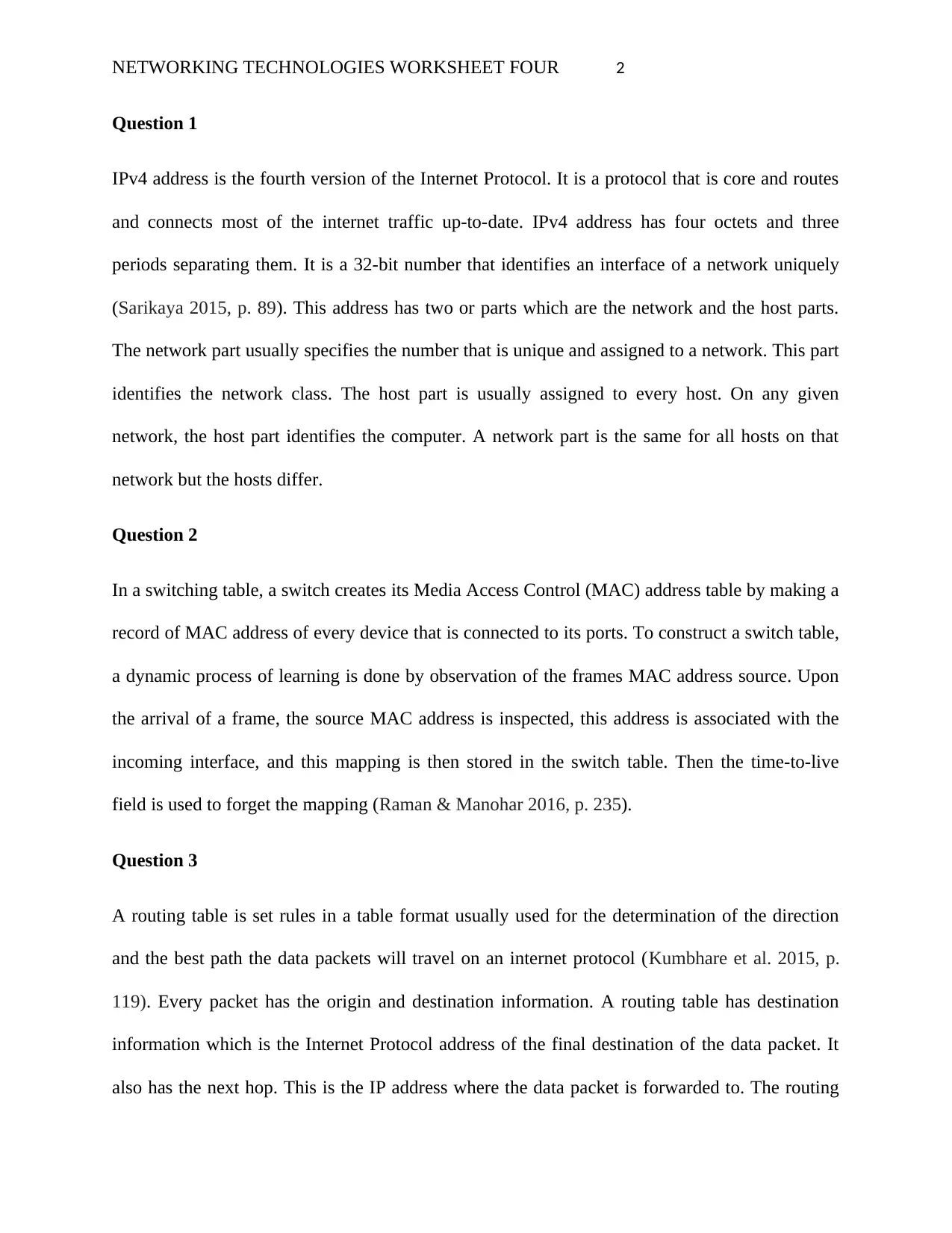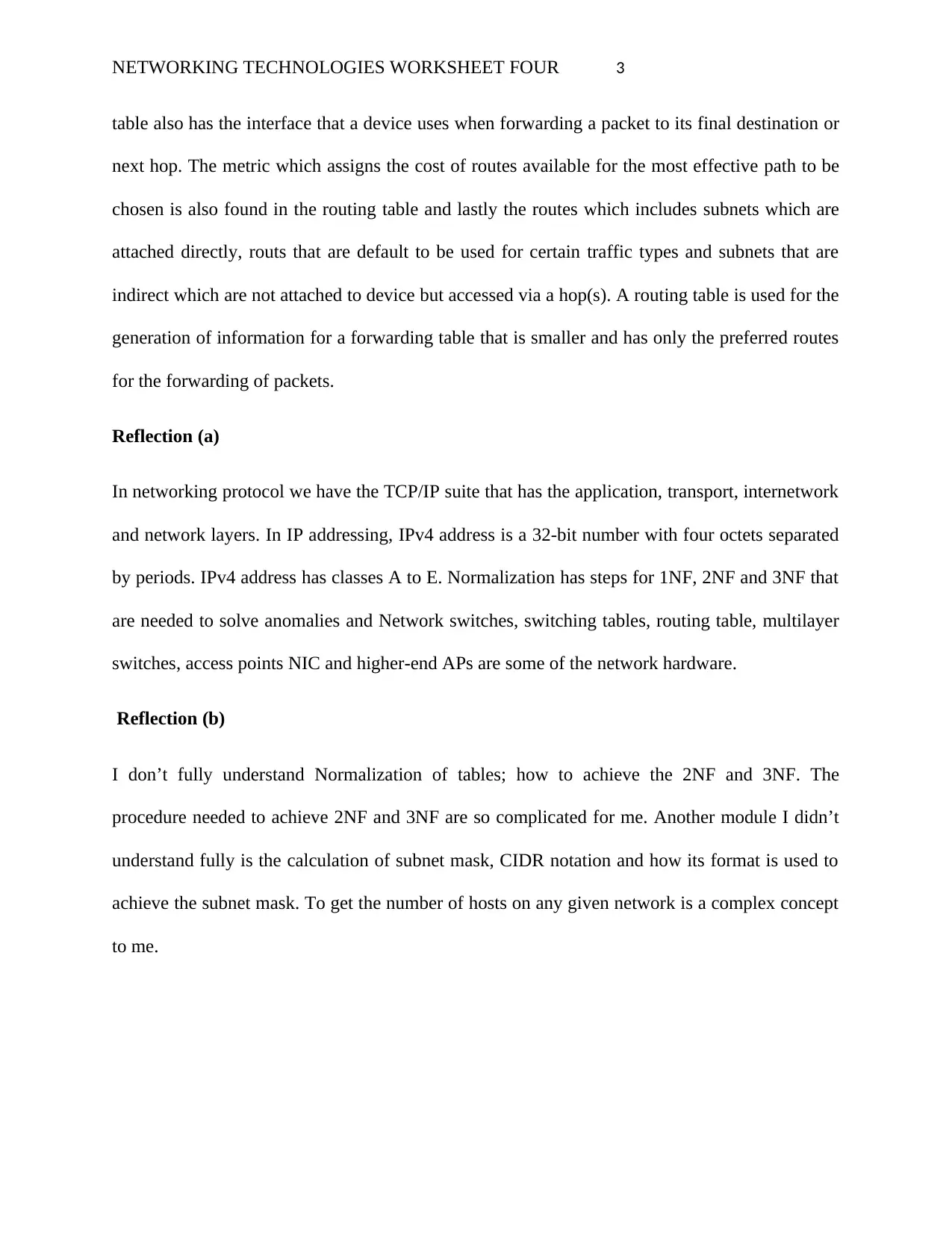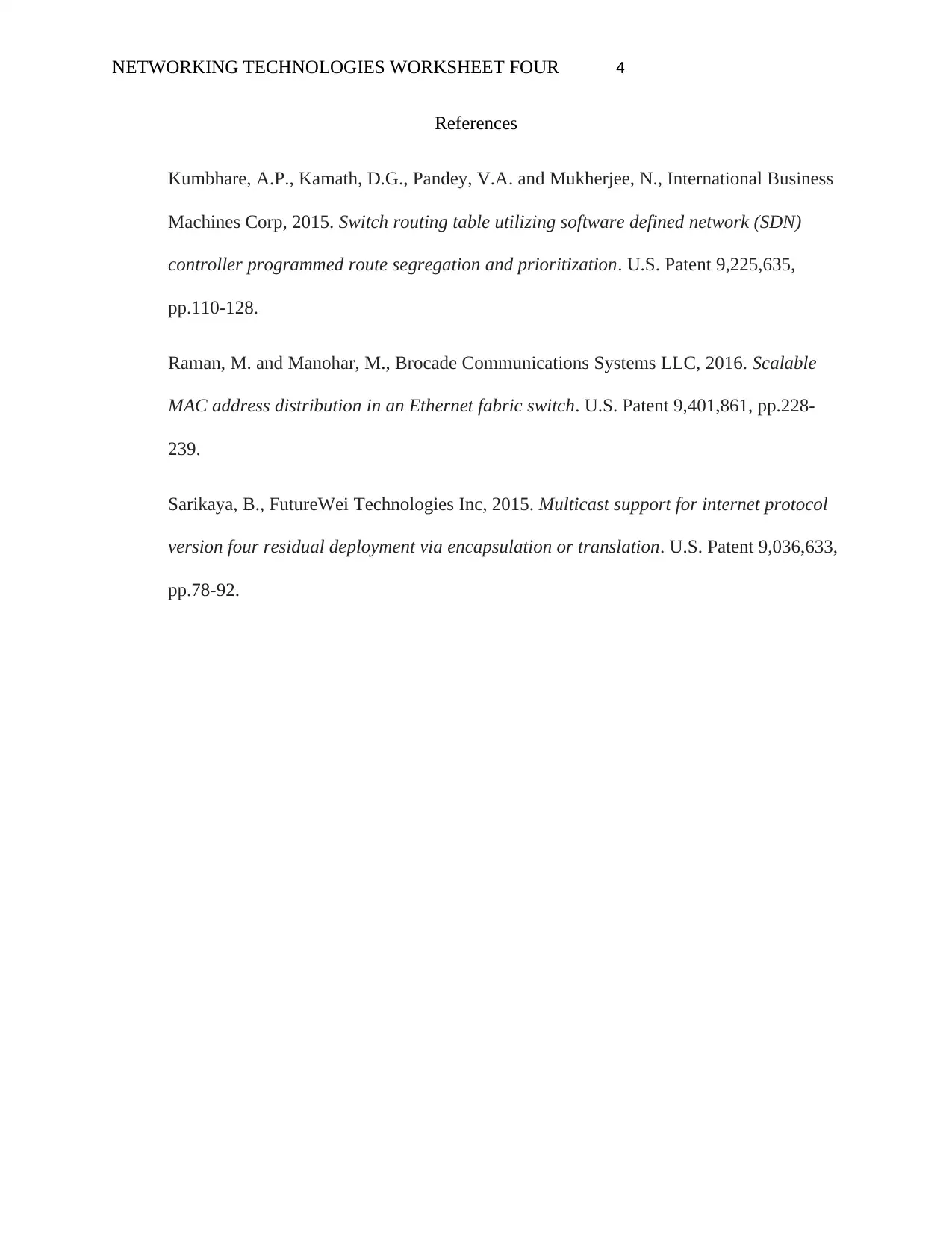Networking Technologies Worksheet 4: IPv4, Switching, Routing
VerifiedAdded on 2023/02/01
|4
|770
|79
Homework Assignment
AI Summary
This assignment, "Networking Technologies Worksheet Four," delves into core networking concepts. It begins with an explanation of IPv4 addresses, detailing their structure, function, and significance in internet traffic routing. The worksheet then explores switching tables, describing how switches build and utilize MAC address tables to forward data frames efficiently. Following this, the assignment analyzes routing tables, explaining their role in determining the optimal paths for data packets based on destination information, next hops, and metrics. The reflection section addresses the TCP/IP suite, IPv4 address classes, and normalization steps. The student also identifies areas of difficulty, particularly concerning normalization, subnet mask calculations, and CIDR notation. References to relevant patents and publications are included to support the presented information.
1 out of 4









![[object Object]](/_next/static/media/star-bottom.7253800d.svg)